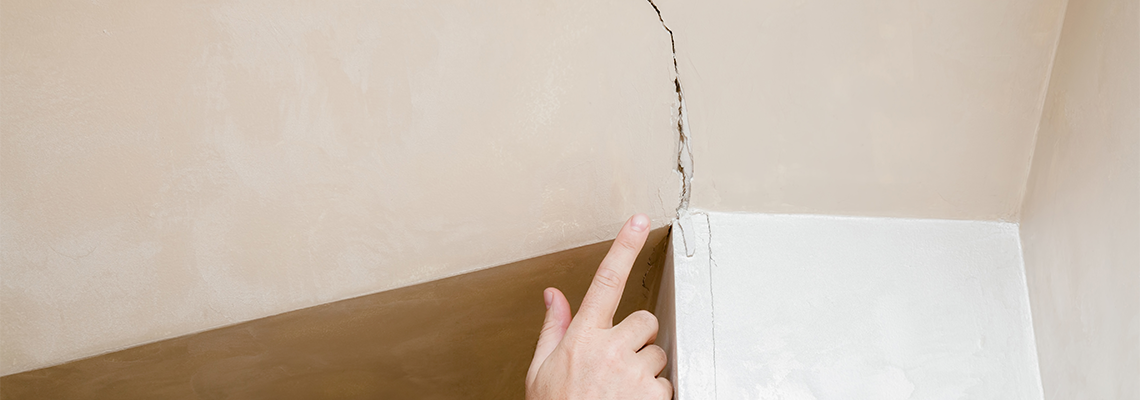
Construction Defect Statute of Limitations
There’s nothing worse than purchasing a new home and as soon as the weather heats up, you turn on the air conditioning and it doesn’t work. Generally, these matters will be covered by a homeowner’s warranty issued by the builder, and in this example, the defect is fairly obvious almost from the start. But what happens if, a few years later, that AC unit quits functioning? Will the builder still come to your rescue?
A lot will depend on the terms and conditions of the warranty that came with the structure. Let’s assume something worse happens; maybe the foundation starts collapsing. If you’ve lived there for five years, can you file a lawsuit to get compensated for your losses? The answer, in this case, depends on Florida’s statute of limitations for construction defects, which is generally four years unless the defect is shown to be “latent.”
If you’ve just purchased a home or office building in or around Miami, Florida, and defects are surfacing that the builder will not honor, contact us at Miguel A. Brizuela, P.A. Our legal team is well-versed in federal, state, and local real estate and construction law. We will evaluate your situation and advise you of your best legal options going forward, and then fight for your rights.
We serve clients throughout Southern Florida, including not only Miami but also Fort Lauderdale and West Palm Beach.
Florida’s Statute of Limitations on Construction Defects
Florida Statutes Section 95.11 sets a time limit of four years for a construction defect civil action, stating:
“An action founded on the design, planning, or construction of an improvement to real property, with the time running from the date of actual possession by the owner, the date of the issuance of a certificate of occupancy, the date of abandonment of construction if not completed, or the date of completion of the contract or termination of the contract between the professional engineer, registered architect, or licensed contractor and his or her employer, whichever date is latest; except that, when the action involves a latent defect, the time runs from the time the defect is discovered or should have been discovered with the exercise of due diligence.”
A latent defect is given 10 years for civil action, but that doesn’t mean if you discover the latent defect in year three that you have 10 years to file a lawsuit. Rather, if the latent defect appears anywhere in the first 10 years of possession, then it can be actionable. Latent defects are generally considered to be hidden or concealed defects that are not readily discoverable.
What Is a Statute of Repose?
A statute of limitations establishes a time frame in which a lawsuit must be filed, which in the construction industry is generally four years from the time of possession of the new structure (see above). A statute of repose, on the other hand, sets a time limit on when liability can be claimed. A statute of repose sets an ultimate time limit on filing civil actions. For instance, the latent defect exception is subject to a 10-year statute of repose after the completion of the structure.
What’s Covered in a Construction Warranty?
Not all warranties are the same, so you need to read the fine print when you set about to purchase a newly-constructed home or business structure. Typically, however, a warranty will provide:
One year for labor and materials
Two years’ protection for mechanical defects – plumbing, electrical, heating, air conditioning, and ventilation systems
Ten years for structural defects in the home
What to Do If a Dispute Arises
Even when a defect appears to be clearly covered by a warranty, a dispute of who did what and who’s responsible for the discovered problem can easily arise. If this happens, Florida law requires that you work with the builder, contractor, or other responsible entity through an “alternate method” before launching a civil lawsuit. Florida Statutes 558.001 states:
“An effective alternative dispute resolution mechanism in certain construction defect matters should involve the claimant filing a notice of claim with the contractor, subcontractor, supplier, or design professional that the claimant asserts is responsible for the defect, and should provide the contractor, subcontractor, supplier, or design professional, and the insurer of the contractor, subcontractor, supplier, or design professional, with an opportunity to resolve the claim through confidential settlement negotiations without resort to further legal process.”
After you file the notice of claim, you can commence negotiations to iron out any differences and get the matter settled. If negotiations don’t go anywhere, you can then turn to mediation or arbitration. Mediation involves letting both sides present their arguments before a mediator, and the mediator will then attempt to reach a mutual consensus, but nothing is binding.
Arbitration, on the other hand, is more like an actual trial with courtroom rules of evidence being observed (except that hearsay is often allowed in arbitration). The finding of the arbitrator is considered binding.
Of course, there is always the potential for litigation once you’ve served your notice of claim. If negotiations lead nowhere, you are then free to take the matter to court, but you should follow the legal advice you obtain in whichever course of action you decide on – mediation, arbitration, or litigation.
Experienced Guidance Every Step of the Way
If you have a construction defect claim in Miami or anywhere in Southern Florida, contact our legal team at Miguel A. Brizuela, P.A. We will assess the situation and advise you on how to proceed to resolve the situation. We will handle negotiations and launch a lawsuit if matters warrant that kind of action. Reach out to us immediately with all your construction defect questions and concerns.
